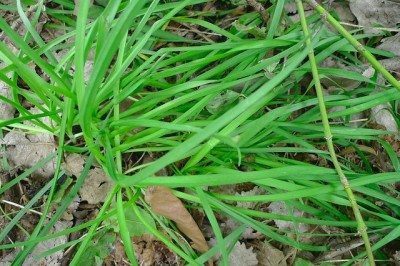
Crabgrass prevention is important in lawn care, and timing is key to ensuring success. Knowing when to apply pre-emergent herbicides and other products can help you prevent crabgrass from taking over your lawn. Understanding the best times for application will also help you save money by avoiding unnecessary treatments.
The time for crabgrass prevention is late April and early May. Dill’s Greenhouse carries the Preen and GreenView lines of crabgrass herbicide and fertilizer. The most important thing to remember about timing for crabgrass prevention is that if you wait too long, you may end up with a new crabgrass season.
Crabgrass is an opportunistic annual weed that will grow in your lawn’s thin and bare spots. The first crabgrass to germinate is going to be the seeds that are laying on a south-facing slope, next to the house or next to a sidewalk where the reflection of the sun has heated up the soil to such a point where the crabgrass is ready to germinate. And then it’s going to continue to germinate, kind of like waves hitting a beach, all the way into the early part of the summer.
Crabgrass can take over your lawn, but a little action controls it. Learn how to get rid of crabgrass and how to prevent crabgrass from returning by asking the knowledgeable staff at Dill’s Greenhouse.







 Plump, juicy berries are now easy to grow in your backyard on bushes that are resistant to most pests and diseases, and can produce for up to 20 years.
Plump, juicy berries are now easy to grow in your backyard on bushes that are resistant to most pests and diseases, and can produce for up to 20 years. Have you ever considered trying window boxes across the front of your house? The soil mixture you use is extremely important in the success of how well your plants will do this season.
Have you ever considered trying window boxes across the front of your house? The soil mixture you use is extremely important in the success of how well your plants will do this season. 

 We often get this question at Dill’s Greenhouse…
We often get this question at Dill’s Greenhouse… We don’t want to discourage anyone from going out and getting a beautiful Easter lily because that is the thing to do right now, but do Easter Lilies and cats mix?
We don’t want to discourage anyone from going out and getting a beautiful Easter lily because that is the thing to do right now, but do Easter Lilies and cats mix?  Is springtime a good time to do core aeration?
Is springtime a good time to do core aeration?  It’s crucial to know what you want to achieve with a plant before choosing and caring for it. Different plants have different characteristics and requirements, and selecting the right plant for your desired outcome is key to success. This could mean choosing a large tree for shade or colorful annuals to brighten your flower bed. It’s also vital to consider the environmental conditions in which the plant will thrive, such as sunlight, soil type, and moisture levels.
It’s crucial to know what you want to achieve with a plant before choosing and caring for it. Different plants have different characteristics and requirements, and selecting the right plant for your desired outcome is key to success. This could mean choosing a large tree for shade or colorful annuals to brighten your flower bed. It’s also vital to consider the environmental conditions in which the plant will thrive, such as sunlight, soil type, and moisture levels.